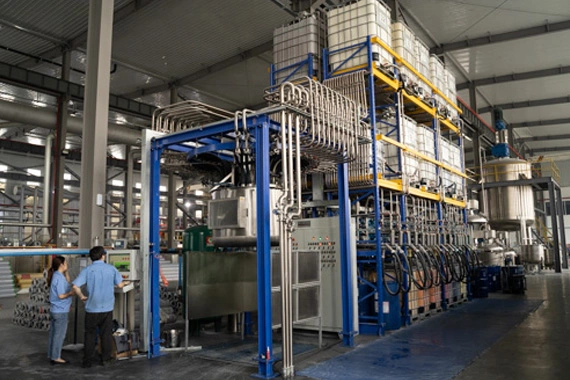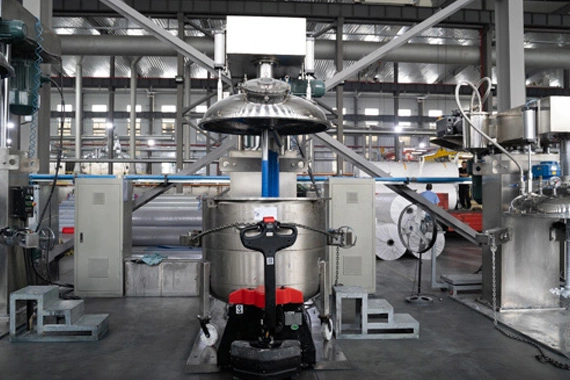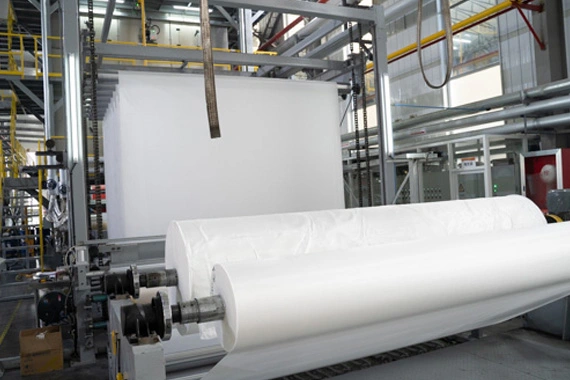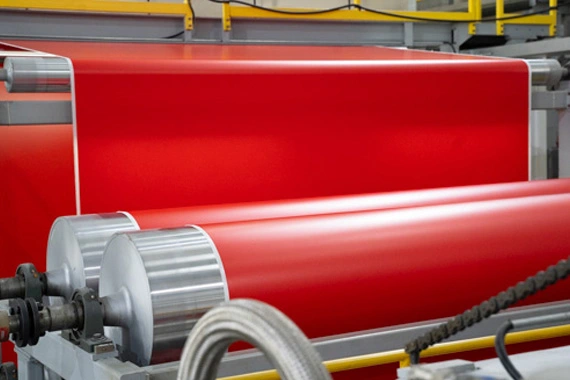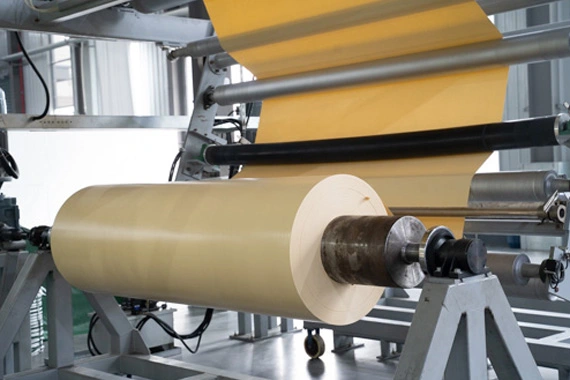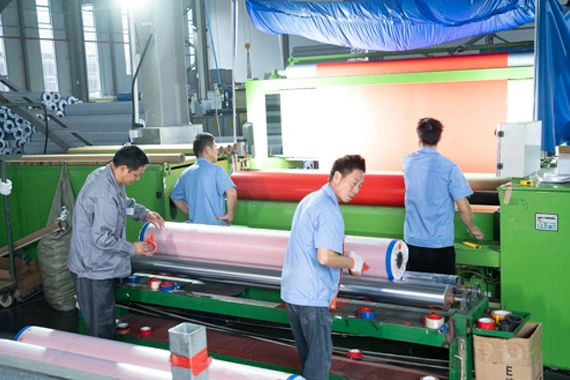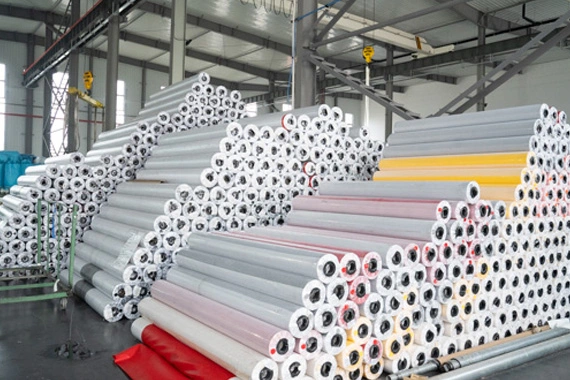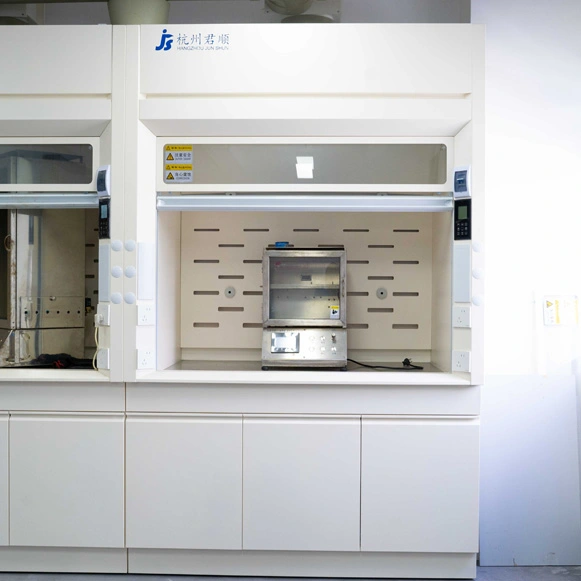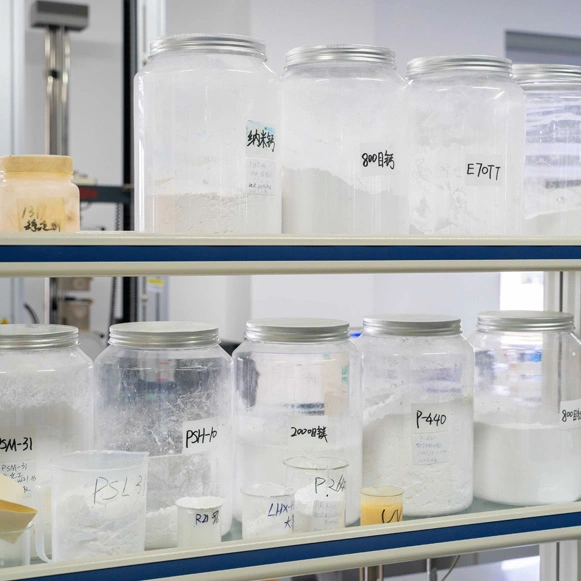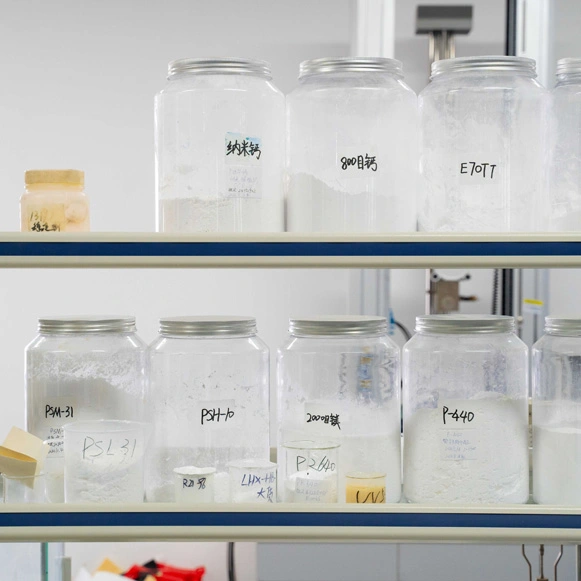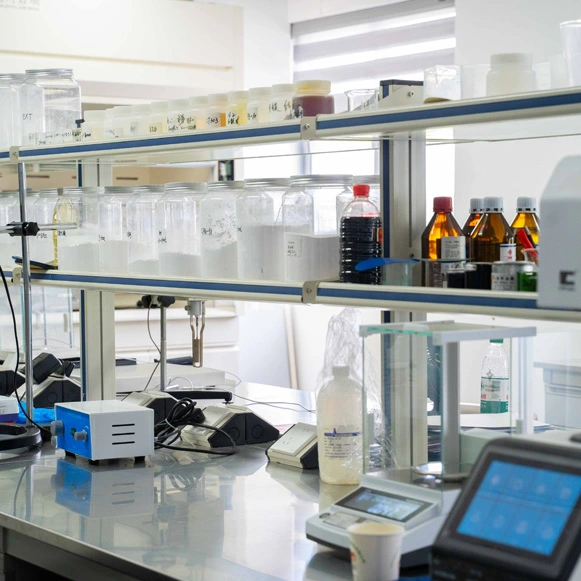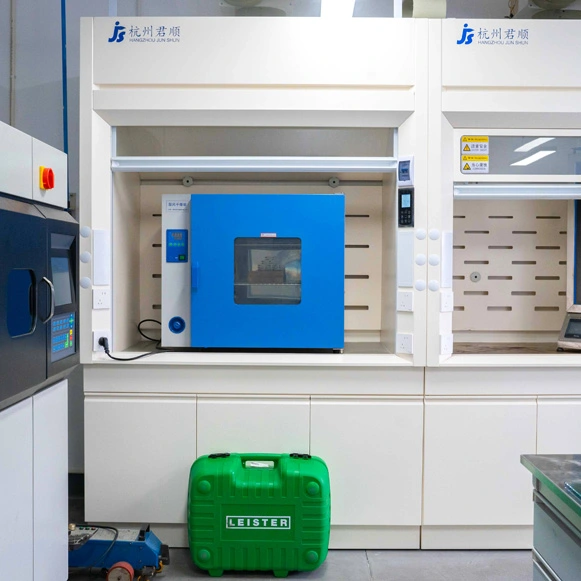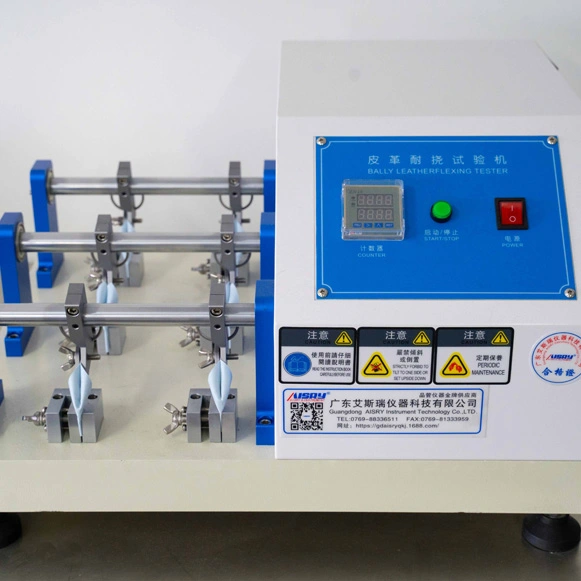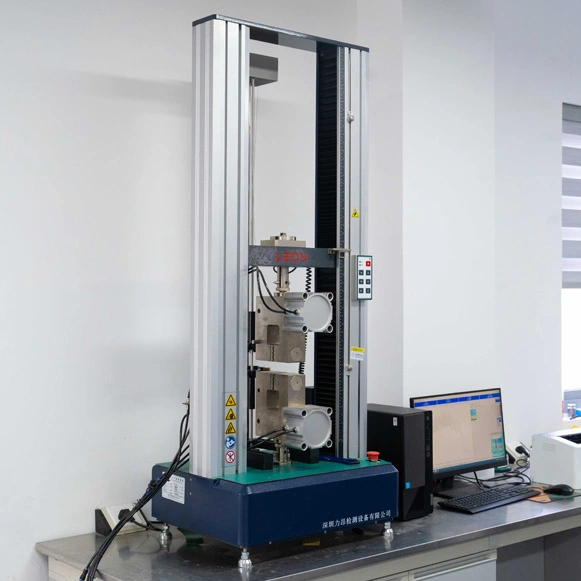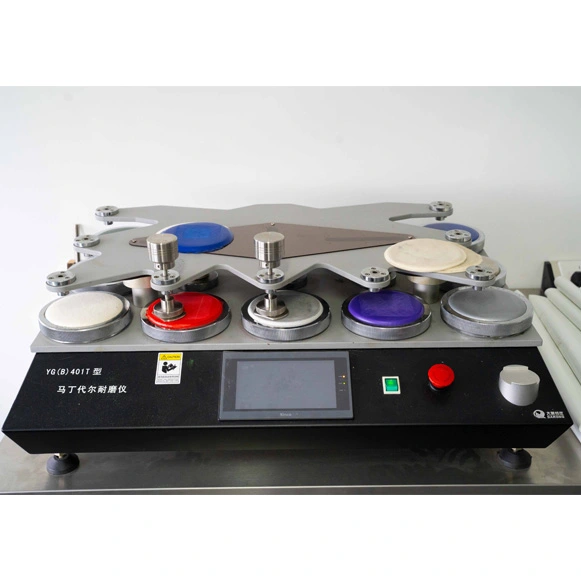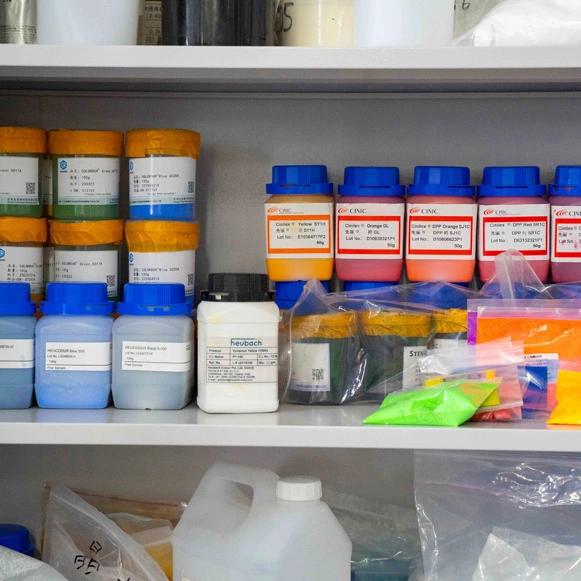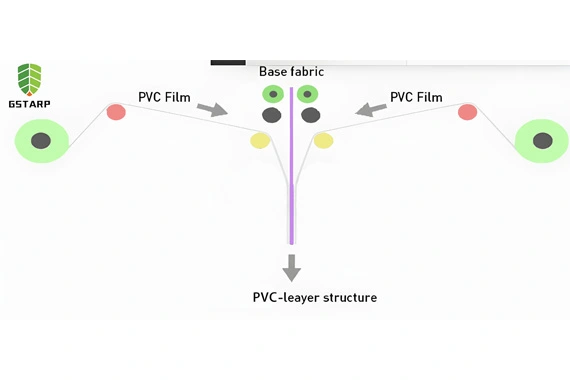
Two layers of PVC film are directly attached to a high mesh base fabric, and the film is produced through a rolling mill production line. The first step is to make an overall formula according to customer requirements, including various additives/plasticizers/stabilizers/fire retardants, etc. The raw resin is heated to a paste, and then mixed with the binder and auxiliary materials, and then heated to a certain temperature in an oven. The film is then rolled into a thin film by the Zhalun roller in the rolling line, and the engraved slag roller is used for surface embossing or relief. The second part is surface treatment, and the hardness of the surface coating is adjusted to obtain a smooth/matte surface with different hand feel. Our film is covered with acrylic or PDF surface for shading. Due to the lack of the entire heating and drying process, the film is not completely produced. Penetrating into the base, the sunshade has a very high tensile strength, The tear resistance strength is also very high, but the peel resistance strength is slightly weaker than that of bonding and coating, and the service life is weaker than that of hot stickers and coatings. The advantage is that the production speed is very fast and the cost is low. It is widely used in advertising printing, various sunshades/covers/furniture equipment covers/waterproof fabrics, car canopy fabrics, and tent fabrics. The usage is very large and has good economy.
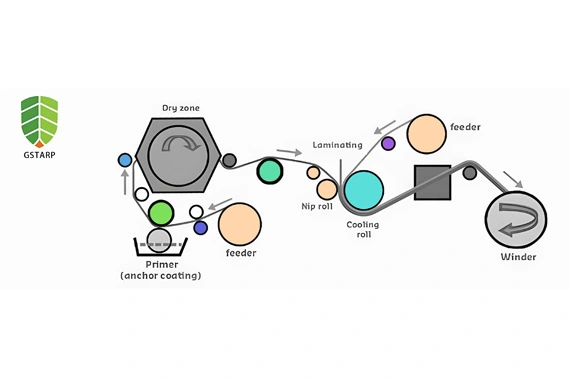
Produce FILM that meets customer requirements through equipment production lines, and add various additives and chemical materials based on the customer's detailed performance requirements.
Then weave the polyester fabric and determine the density and thread diameter of the polyester fabric based on the customer's required tear strength and tensile strength.
The two layers are bonded together by tying and pressing, and then the three layers are tightly bonded together. Then, the coating is heated in an oven and temperature controlled to better penetrate into the polyester fabric, forming a stable compound. The main purpose is to improve tear resistance, obtain better quality stability, and increase durability. By using slitting equipment to obtain precise width, cut into fixed lengths according to requirements, usually 100 meters per roll, and then package with kraft paper and hard paper tubes. The production speed is relatively fast and has good economic benefits. It is widely used in advertising, tents, biogas digesters, breeding farms, ranch enclosures, various covers for ponds, and other fields.
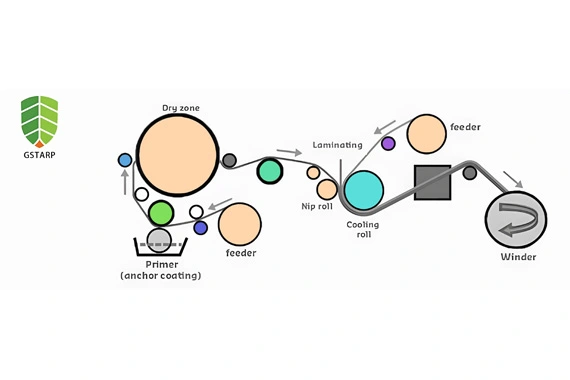
The coating process is a very mature production process with a wide range of applications. This process adds a very important process, which involves placing polyester fabric in a sizing agent for sizing, especially for fabrics that customers require to be 100% opaque. By soaking the fabric in a special opaque additive in the sizing agent, the polyester fabric is completely blocked from light. Other fire-resistant agents and anti-static materials are also added to the slurry. The polyester fabric soaked in the slurry and the upper and lower layers of FILM are extruded by aramid to form a five layer structure fabric. The moisture is removed by drying and tunnel furnaces, and the five layers are tightly bonded to form a stable solid compound, which is then surface treated with acrylic or PVDF as shown in the picture The stability is significantly stronger than that of cool coating and hot coating, with the most significant improvement in airtightness. It is used for inflatable equipment, inflatable boats/paddles/castles, and large inflatable tents/membrane structures. It has good air tightness/durability, tear resistance, tensile strength, flame resistance, antibacterial, anti mold, strong adhesion, 100% waterproof, and is widely used in various fields such as cover, transportation, sunshade, advertising, decoration, printing, etc.
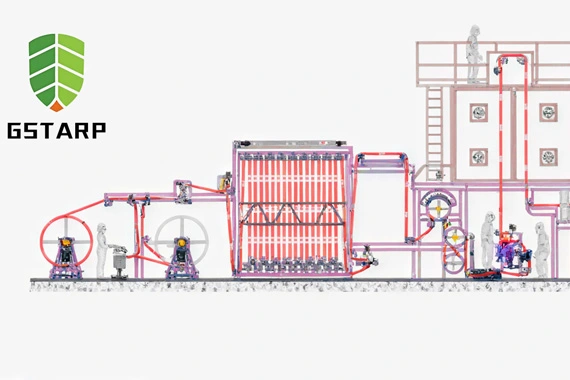
The PVC tarparulin industry currently has the most advanced PVC fabri manufacturing process, imported from Germany with the most advanced knife coated line, with a width of up to 5.1 meters. It is the most advanced production equipment in the industry, with high quality stability and cost advantages. No need for a rolling mill or tying wheels, saving a lot of process flow. The overall length of the long line reaches more than 100 meters, making it an integrated advanced production line. The base fabric passes through two scraper rollers, and the computer controls the gap between the two rollers. The melted PVC material is coated on top of the base fabric to ensure accurate thickness and weight, and to ensure a smooth surface without bumps and depressions. Then, after a long tunnel furnace drying and shaping, the strength of the coating bonding significantly increases the service life, saving a lot of process flow and reducing production steps.
Shortening the production cycle, especially for products with urgent delivery times, allows for immediate delivery.
It can produce engineering films and permanent facility materials, which can be used in fields such as luggage/sports/tent materials/covers/waterproof fabrics. The width of the PVC roll ranges from 0.5-5.1 meters, the weight can reach 2800gsm, and the thickness can reach 2.2 millimeters. It is the best product.
1. Prepare raw materials according to the order:
a. Computer automatic color matching
b. Mixing and cooling of PVC resin and raw materials
c. Base fabric preparation
2. Apply PVC film and mesh or liquid PVC on both surfaces of the base fabric, heat and shape. The most important things are weight control and temperature control. Excessive temperature can cause excessive plasticization, aging, reduced lifespan, brittle base fabric and significantly reduced physical properties. Tempreture too high or too low can lead to insufficient plasticization, inability to weld, unstable performance, and insufficient peeling.
3. During the production process, PVC tarpaulin are inspected for surface issues and promptly corrected.
4. Surface treatment: lacquer acrylic on the surface of pvc tarpaulin sheet or according to customer requirements.
5. Rolling: Roll the product into large rolls with a length of approximately 2500 to 3000 meters
6. Slitting and packaging: The product is divided into rolls according to the customer's requirements, with a standard length of 50 meters per roll, and other lengths according to the customer's needs. After dividing into long and small rolls, package according to the customer's needs. The standard packaging includes foam cotton and kraft paper, with double heads, small cloth labels, and product labels added at both ends. Product labels and kraft paper can be specially customized according to customer needs.
7. Packaging: Load into containers according to customer requirements. It can also be palletized.
8. Welding method: hot air welding or high-frequency welding
9. Routine testing: thickness, weight, width, length, color Logistics performance testing: stretching, tearing, peeling, wear resistance, folding resistance, fire resistance and other tests OEM finished product processing: a fabric cutting b processing methods: sewing, hot air, high-frequency C packaging.
